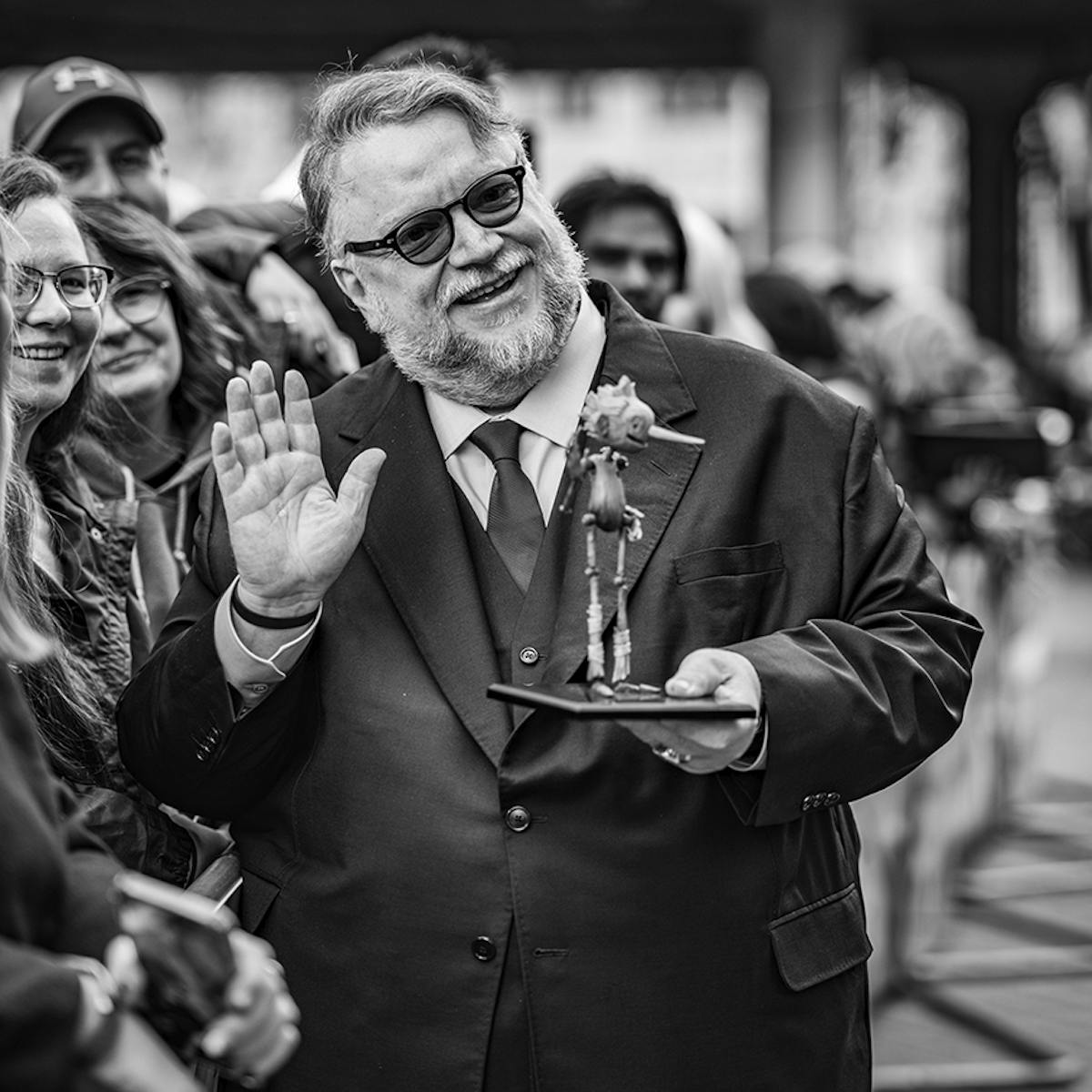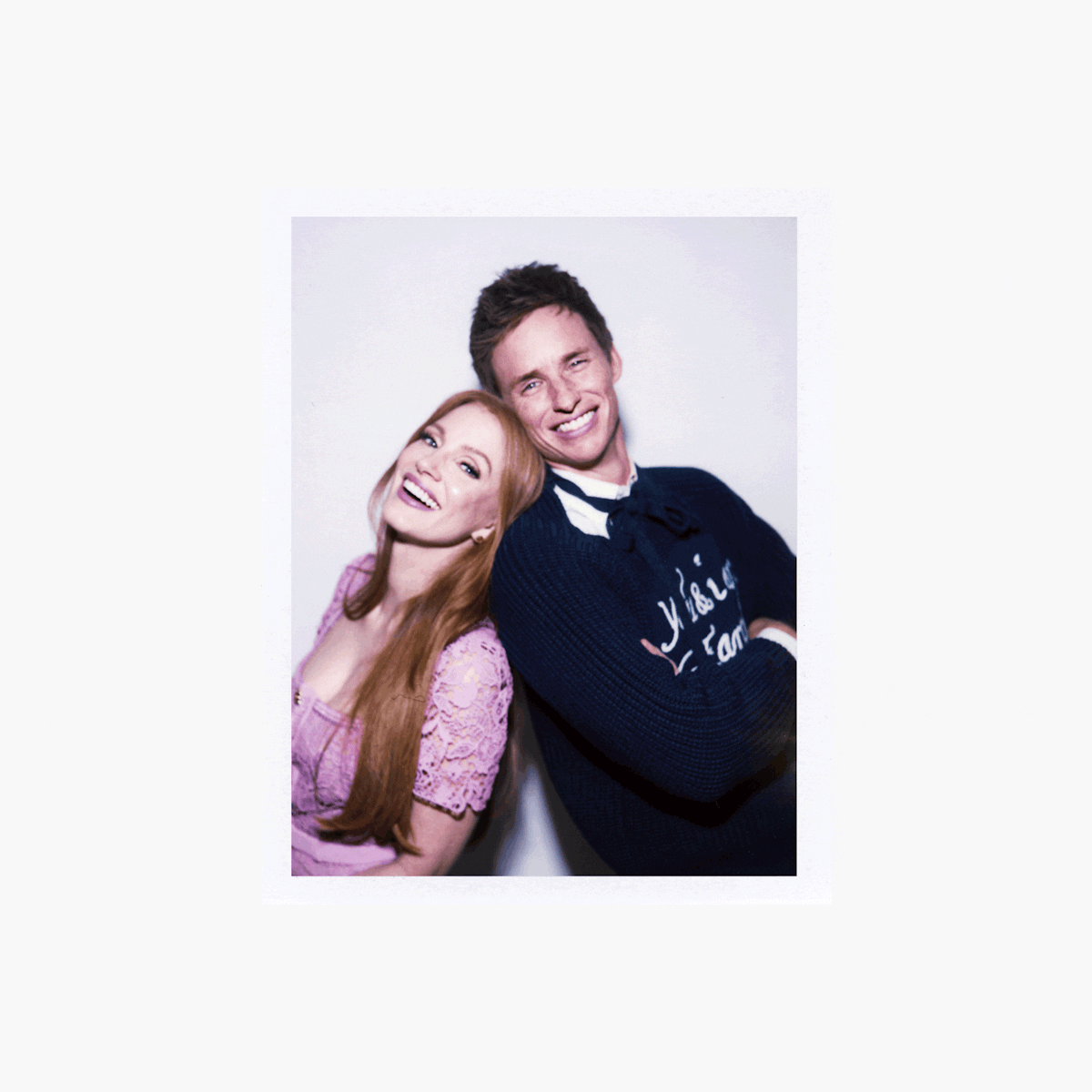The stylish writer-director takes on a new genre with The School for Good and Evil.
Over his decades-long career, acclaimed writer, director, producer, and three-piece suit aficionado Paul Feig has earned a reputation as a master of comedy, directing much-loved episodes of landmark series including Arrested Development and The Office and feature films including the Oscar-nominated hit Bridesmaids. So, at first glance, his latest, the epic fantasy The School for Good and Evil, might seem like something of a departure. But the four-time Emmy Award nominee notes that it’s actually more like a return to form — after all, it was a high school set TV series that launched Feig’s career back in 1999. “People go, Gosh, this is so out of your wheelhouse to do a movie like this,” Feig tells Queue. “I’m like, Guys, this is just Freaks and Geeks with magic and creatures and lots of danger.”
Based on author Soman Chainani’s best-selling young adult novels, The School for Good and Evil centers on best friends Sophie (Sophia Anne Caruso) and Agatha (Sofia Wylie), whose lifelong bond is unshakable despite their extreme differences — bright and sunny Sophie dreams of living out her days as an adored princess, while quiet and withdrawn Agatha, rumored to be a witch, would rather spend time with her black cat than the small-minded folk who live in the village of Gavaldon where she was born.
To their great dismay, both find themselves whisked away to the mythic School for Good and Evil where heroes and villains learn their craft — with Sophie deposited on the side of evil and Agatha, good. Each is, in her own way, a magical fish out of water, desperately swimming against the tide, to the great chagrin of their instructors, the supremely sinister Lady Lesso (Oscar winner Charlize Theron) and the exceptionally principled Professor Dovey (Emmy winner Kerry Washington). But as they interact with the children of famous fairy tale figures, including King Arthur’s son, the charming Tedros (Jamie Flatters), Sophie and Agatha make some surprising discoveries about themselves and one another.

Kerry Washington and Paul Feig
“I love melting pot situations where people are thrown together,” Feig says. “I think high school is terrible — just because you live in the same town, you all have to be stuck in this building together? In this world, just because you come from fairy tale origins, you have to go to this school and be stuck with people? What’s funny about this school is half the school wants to kill the other half of the school. So, it raises the stakes in a really fun way.”
With The School for Good and Evil set for release on October 19, Feig recently spoke to Queue about his foray into storybook fantasy and working with an all-star cast — which includes Michelle Yeoh, Patti LuPone, Laurence Fishburne, and Cate Blanchett as the voice of the all-knowing “Storian” — while enjoying the fall weather on his patio in New York.
An edited transcript of the conversation follows.

Sofia Wylie
Queue: What most appealed to you about the idea of directing The School for Good and Evil?
Paul Feig: I love the characters and the story. I’m always looking for great three-dimensional roles for women. And I love this relationship between these two young women in the center of the film and the whole idea that friendship ultimately wins the day — I love stories about female friendship, and it’s something that’s not portrayed that much on the screen. I also really like the meditation on good and evil. Today’s world is so black and white that I feel like we’re living in The School for Good and Evil a little bit. And then I like that the whole thrust of the story [is that] we’re not all good, we’re not all evil — we’re just human, so let’s figure out how to get along, and let’s stop stereotyping each other.
The cast is stacked with great actors, even in the smaller roles. Did you always have Kerry Washington, Michelle Yeoh, and Charlize Theron in mind for their characters? You and Charlize had worked together before, on Arrested Development, of course.
PF: Ever since Arrested, we’ve been trying to figure out what else we could do together. When I read this, I remember thinking Lady Lesso would be perfect for Charlize . . . She and I both saw how funny and how extreme she could be in the role. Also for her, she was dying to make a movie that her kids could watch because they can’t watch Mad Max: Fury Road. I think that’s what drew Kerry to it, too. She’s somebody else I wanted to work with — we’ve been in communication over the years — so it was thrilling when she said she wanted to do the film. Then Michelle Yeoh, who I love and adore — I was like, Please just do anything in the movie.
What was it like to have these established veterans leading the cast with your two young stars? Did you see a lot of mentoring happening on set?
PF: Well, I mean, they’re both such professionals. I first saw Sophia Anne Caruso on Broadway in Beetlejuice back before I even knew this project existed, and I filed her away on the list of people I was dying to work with. At first, I thought she should be Agatha because in Beetlejuice, she’s very goth-looking with the dark hair and stuff. Then as soon as I met her, I realized, Oh, she’s so Sophie. She just has that kind of impetuous energy about her that ping pongs around to different things, but a maturity, too. I didn’t know Sofia Wylie, but I loved her audition. She was so good and so affecting. Only then did I find out she’s actually famous from High School Musical and from her 9 million TikTok followers. But when they got on the set, they’re such professionals that they slipped right in. There was no mentoring required. They were just going toe to toe with these seasoned, amazing professionals.

Paul Feig
We should talk about the elaborate costumes, which were designed by Renée Ehrlich Kalfus. Certainly, you yourself are a very fashionable gentleman. I understand that you found the walking stick Charlize carries in the film?
PF: Well, yeah. When I direct, I always have a walking stick with me as a total affectation. It’s something I started back when I was doing [the 2015 Melissa McCarthy film] Spy. When I went to the first fitting of those outfits with Charlize, I had my walking stick with me, and she was like, “Let me try that.” Then she fell in love with the idea of having a walking stick, which I fell in love with, too. So we got her some from the props department. [In one of the classroom scenes] she decided to hit a desk with the stick and immediately broke the stick in half. So I was like, “Well, use mine. It’s pretty sturdy.” By the end of the scene, it had a crack running down the length of it. She’s all in when she’s acting, let’s just say that.
Perhaps the props department could have cast a couple from rubber for you?
PF: I know. But what fun would that be?
That also brings up the idea of using the costume for comedy. There’s a great moment where Professor Dovey is showing Agatha princess dresses and says to her, “You don’t seem like a pink girl to me, but don’t worry. We have fuchsia, watermelon, rose, etc.” Given your background, did you look for subtle ways to highlight some of the comedy inherent in the story?
PF: Yeah, I don’t do anything that doesn’t have an element of comedy in it, even if it’s dark comedy like A Simple Favor. So I really just saw that there’s a lot of potential for this to be funny. But the biggest thing when you’re doing a genre that’s not straight comedy is that you have to be true to the genre. You have to make sure the comedy never subverts the genre or kills the stakes or makes it silly in a place where it shouldn’t be silly. You have to make it all based on the characters and how they react to things in the situations they are in. When the dresses come out, that’s funny because Professor Dovey’s just so over-the-top happy about stuff, and here’s this young woman who doesn’t want to be there, who clearly wears dead people’s clothes from the cemetery. The fact that Dovey’s completely clueless, that’s the kind of comedy I really like, [where] we’re laughing [at someone’s] reaction to a ridiculous situation.
In the book, it says that they have school uniforms — and that’s very Harry Potter-ish obviously. To me, the school is a melting pot for every fairytale from every culture from all over the world, so everybody would come in with their own world’s style, basically. When Renée Kalfus and I were figuring out a look, we had so many reference photos from all eras of fashion and all magazines. We wanted it to have a contemporary streak in it, but we also thought everything should be a mishmash of different looks that somehow harmonized. My favorite part was all that design. It was like catnip to me because I’ve always wanted to be able to create a world from the ground up, visually and otherwise. I never thought I would want to do fantasy, and the minute I got into it, I was like, This is great. I’m not only going to do fantasy for the rest of my career, but it was so much fun to dip into that world.
Not for the rest of your career, but maybe a sequel or two would be okay?
PF: I would love that.




